Small and medium enterprises SME
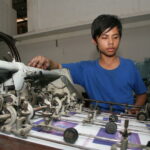
Small and medium enterprises (SME) have long been considered a vital driver to economic growth for developing economies. SMEs stimulate job creation throughout the country. Migration of employment to neighboring countries and the unemployment rate has significantly decreased due to a rising number of SMEs, ...
SMEs policy and regulation

The Covid-19 pandemic has caused a major economic shock in Cambodia, having a spillover on Cambodian micro, small and medium enterprises (MSMEs) and small household farmers’ survival and business continuity.1 Digital technologies are crucial during the pandemic, in which the owners of SMEs should focus ...
Ethnic minorities and indigenous people
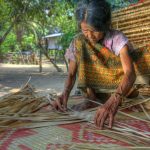
According to the Kingdom of Cambodia’s 2019 general population census, the total Cambodian population is 15,552,211 (51.31% of females).49 By 2021, the population increased to 16,589,023.50 Vietnamese, Chinese, Chams and other minorities also live in the country. Indigenous ethnic groups known as “Khmer Loeu” live ...
Ministries and other national bodies
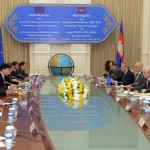
Nearly all of the ministries were established in 1995. A few ministries were only recently created in the post-2013 national election by a separation of one ministry into two. There are 28 government ministries and secretariats, and many national bodies. ...
Extractive industries licensing and payments
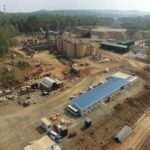
Overview of an industrial gold mine and refinery in Okvau. Photo taken from the Ministry of Mines and Energy’s Facebook Page, taken on 11 June 2021.Mineral resources are defined as “any substance, whether in solid, liquid or gaseous form, naturally originated by a geological process ...
Land policy and administration
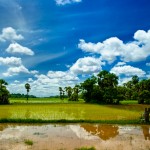
The Royal Government of Cambodia's land policy has three pillars: land administration, land management and land distribution. The objective of the country’s land policy is to facilitate the use and management of land and natural resources for socio-economic development in an equitable and sustainable manner. ...
Energy policy and administration
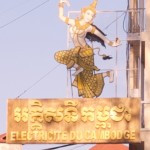
Electricite du Cambodge (EdC). Photo by bmeabroad, taken on 10 November 2011. Licensed under CC BY-NC-SA 2.0.Low electrification rates and over-dependence on fossil fuel imports have contributed to Cambodia ranking 120 out of 124 nations in the new World Economic Forum’s Global Energy Architecture Performance Index ...
Overview of policy and legal framework
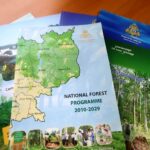
Environmental protection and conservation are given high priority in the Royal Government of Cambodia’s guiding strategy, the Rectangular Strategy Phase III (2014–2018). ...
Agricultural commodities, processing and products
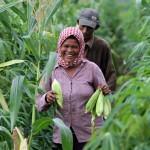
Farmers harvest corn from their farms, Cambodia. Photo by World Bank/Chhor Sokunthea, taken on 17 July 2013. Licensed under CC BY-NC-ND 2.0Key agricultural commodities and products include rice, rubber, corn (maize), vegetables and fruit, and cassava (tapioca). More than 90 percent of Cambodia’s agricultural exports ...
Agriculture and fishing
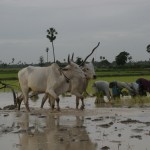
Rice farmers working in the field, Kandal province, Cambodia. Photo by ILO/ Khem Sovannara, taken on 12 July 2007. Licensed under CC BY-NC-ND 2.0.Agriculture continues to play an important role in Cambodia’s economy, but it provides a livelihood for a smaller proportion of today’s population ...
Land tenure and land titling funding
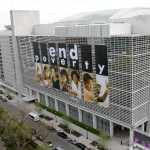
World Bank Headquarters, 2013: World Bank/IMF Spring Meetings. Photo by Simone D. McCourte, World Bank, taken on 16 April 2013. Licensed under CC BY-NC-ND 2.0.Funding data on development and assistance to land tenure and titling issues presents an incomplete and conflicting picture. Though various sources exist ...
Marine and coastal areas
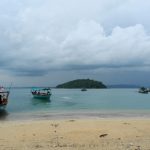
In terms of attractiveness, one of Cambodia’s assets is the relative absence of intense development along its coasts, in comparison with neighboring countries. The 440 kilometer-long coastline includes a large area of non-urbanized zones, where locals can make their livelihoods from coastal resources. Cambodia’s coastline ...
Non-governmental preparedness and response agencies

Cambodia has a large number of United Nations agencies, international and national non-governmental organizations (NGOs) engaged in humanitarian, rehabilitation, and development initiatives as well as disaster risk reduction and disaster management.Under the Law on Disaster Management (2015), Article 32, if the National Committee for Disaster ...
Ministry of Education, Youth and Sports
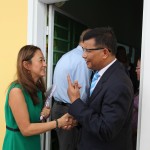
H.E. Hang Chuon Naron and Julie Chung in the inauguration of the Rice Academy, Cambodia. Photo by U.S Embassy Phnom Penh, take on 17 September 2014. Licensed under CC BY-NC-ND 2.0In 1996, the Ministry of Education, Youth and Sport (MoEYS) was established.340 Its organization and functioning ...
Development policies and administration
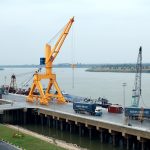
Products from Vietnam arrive at the Phnom Penh Autonomous Port in Kandal province. Photo by World Bank Photo Collection, taken on 23 February 2013. Licensed under CC BY-NC-ND 2.0The Comprehensive Cambodian Peace Agreement, commonly referred to as the Paris Agreement, is seen as the beginning ...
Wild capture commercial fishing and natural fisheries
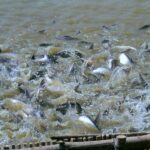
The fishes on Tonle Sap Lake, Cambodia. Photo by llee Wu, taken on 10 September 2010. Licensed under CC BY-ND 2.0The 2006 Fisheries Law classifies fishing activity into three broad categories: family or subsistence, small-scale and commercial.Commercial fishing is allowed only in the open season ...
Ministry of Foreign Affairs and International Cooperation
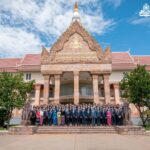
Ministry of Foreign Affairs and International Cooperation. Photo taken from the ministry’s Facebook Page, taken on 23 August 2023.EstablishmentUnder Royal Decree No. NS/RKM/0196/10, the Ministry of Foreign Affairs and International Cooperation (MFAIC) was formally established on 24 January 1996. The ministry has a total of ...
Land tenure and land titling

Land registration and titling of private property has been ongoing for more than a decade. As the Cambodian government works to formally register all private property, there is a dual system of soft possessory rights to be replaced by hard ownership rights through nationally-recognized title. ...
SDG 6 Clean water and sanitation
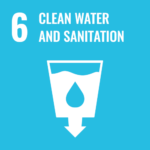
Sustainable Development Goal 6 has 8 targets and 11 indicators, which will be used to drive action towards achieving universal access to safely managed water and sanitation and appropriate management of water resources.430 SDG 6 recognizes that sustainably managing water goes beyond providing a safe water ...
SDG 11 Sustainable cities and communities
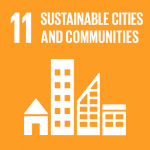
SDG 11 – “Making cities and human settlements inclusive, safe, resilient and sustainable” – aims to improve housing, transport, public spaces and urban environments, and strengthens resilience to disasters and climate change.There are seven targets covering specific areas and three means of implementation targets.480 Most of the ...



